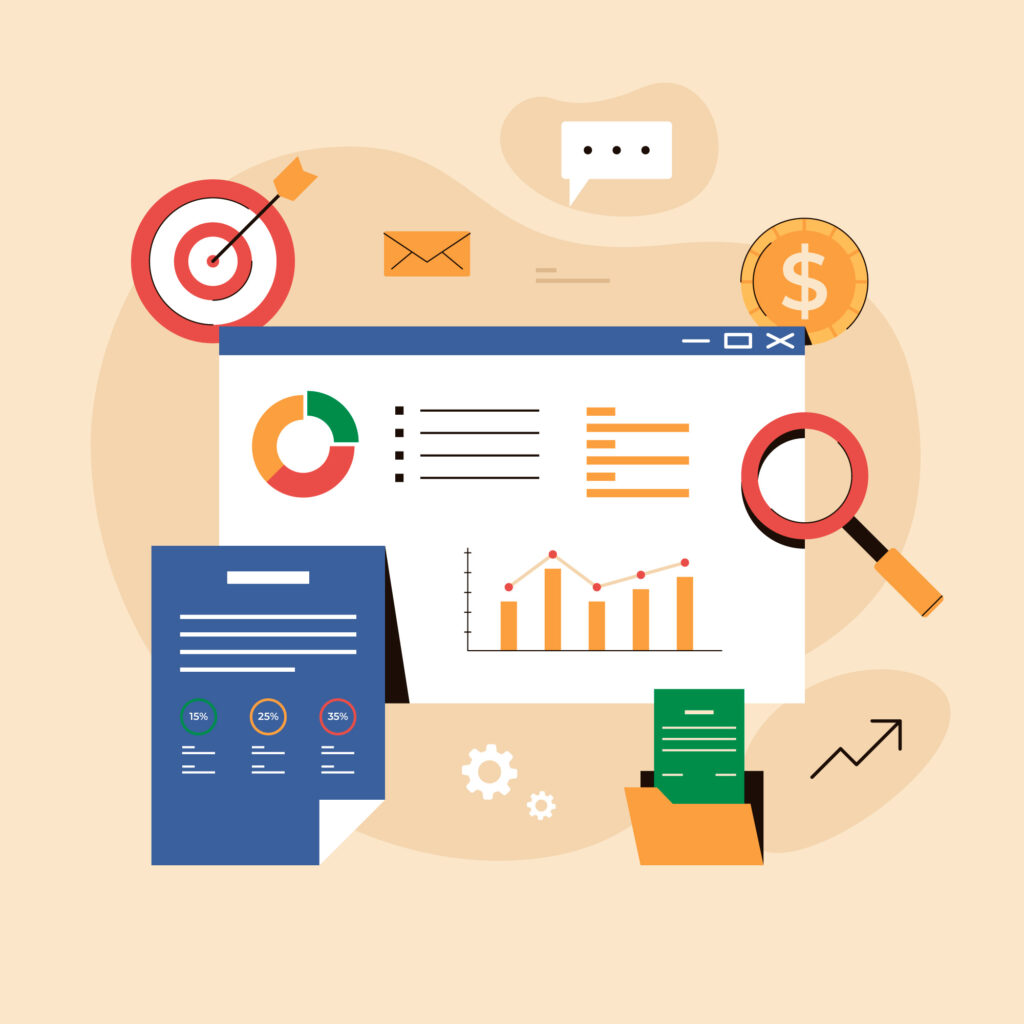Table of contents
- 1. What is On-Page SEO? An Overview
- 2. Crafting Powerful Titles and Meta Descriptions
- Tips for Optimizing Titles and Meta Descriptions:
- 3. Organizing Your Content with Header Tags (H1, H2, H3)
- 4. Creating SEO-Friendly URLs
- 5. Writing High-Quality Content That Engages Users
- 6. Optimizing Images for SEO
- 7. Improving Page Speed and Mobile Experience
- 8. Internal Linking for Better SEO and Navigation
- 9. Leveraging Schema Markup for Rich Results
- 10. Optimizing for Featured Snippets
- 11. Enhancing User Experience (UX) for SEO Success
- 12. Tracking SEO Performance with Analytics Tools
- 13. Staying Ahead of SEO Trends
- 14. Conclusion: Consistency is Key to On-Page SEO
1. What is On-Page SEO? An Overview
On-page SEO refers to all the optimizations you make directly on your website to improve search engine rankings. It includes everything from content optimization to HTML tags, images, URLs, and internal links. Unlike off-page SEO, which focuses on external factors such as backlinks, on-page SEO gives you complete control over your website’s elements.
By perfecting your on-page SEO, you help search engines understand your website and match it with relevant search queries, ensuring you rank higher and attract the right audience.
2. Crafting Powerful Titles and Meta Descriptions
Your title tag is a crucial component of on-page SEO. It’s the first thing users see in search results, influencing whether they click on your link. Similarly, the meta description provides a brief summary of your content and impacts click-through rates (CTR).
Tips for Optimizing Titles and Meta Descriptions:
- Keep titles within 60 characters to prevent them from being cut off.
- Naturally place primary keywords at the start of the title for better visibility.
- Write meta descriptions between 120-155 characters with engaging language.
- Use action words that motivate users to click.
Example:
- Title: “Boost Your Rankings with On-Page SEO Techniques for 2024”
- Meta Description: “Discover expert tips to boost your rankings with on-page SEO. Learn key strategies updated for 2024!”
3. Organizing Your Content with Header Tags (H1, H2, H3)
Header tags structure your content, making it easier for readers and search engines to navigate. Search engines use headers to determine the hierarchy and relevance of your content, which helps them rank your page effectively.
Header Tag Optimization Tips:
- Use only one H1 tag per page to represent the main topic.
- Utilize H2 and H3 tags to break down your content into sections.
- Include keywords in subheadings where appropriate, without stuffing.
4. Creating SEO-Friendly URLs
An optimized URL is concise, meaningful, and includes relevant keywords. Clean URLs enhance user experience and help search engines understand your content better.
URL Optimization Tips:
- Keep URLs concise—50-60 characters is ideal.
- Use hyphens (-) to separate words, as search engines prefer them over underscores.
- Include a primary keyword naturally in the URL.
Example:
- Optimized URL: https://yourwebsite.com/on-page-seo-guide-2024
5. Writing High-Quality Content That Engages Users
High-quality content remains the foundation of effective SEO. Search engines prioritize useful, relevant, and well-organized information that answers user intent. The more engaging your content, the longer users stay on your site, which improves your rankings.
Content Optimization Tips:
- Identify relevant keywords and seamlessly integrate them into your content.
- Aim for 1,500-2,500 words to cover topics in-depth.
- Enhance readability by incorporating bullet points, visuals, and brief paragraphs.
- Link to related content to keep users on your site longer and reduce bounce rates.
6. Optimizing Images for SEO
Images enhance the visual appeal of your site, but they must be properly optimized to avoid slowing down your page. Google considers page speed a ranking factor, so image optimization is essential.
Image Optimization Tips:
- Use descriptive file names (e.g., on-page-seo-strategies.png).
- Optimize images to retain quality while reducing their file size.
- Add alt text with keywords to improve accessibility and SEO.
- Use responsive images that adjust to screen size.
7. Improving Page Speed and Mobile Experience
Page speed directly affects user experience and SEO. Sites that take too long to load lose visitors, which increases bounce rates. With mobile traffic accounting for a large share of searches, your site must be optimized for mobile devices.
Page Speed and Mobile Optimization Tips:
- Use Google PageSpeed Insights to monitor and improve speed.
- Enable browser caching and compress files to reduce load times.
- Choose a mobile-responsive theme that offers a seamless experience across devices.
- Implement AMP (Accelerated Mobile Pages) for lightning-fast loading on mobile.
8. Internal Linking for Better SEO and Navigation
Internal linking enables search engines to grasp the connections between your content.. It also improves user engagement by guiding visitors to relevant pages.
Internal Linking Tips:
- Use anchor text that includes keywords and provides context.
- Link to high-priority pages to distribute page authority.
- Ensure all internal links work properly to avoid user frustration.
9. Leveraging Schema Markup for Rich Results
Schema markup provides additional information about your content, helping search engines display rich results. These results can include star ratings, FAQs, and events, increasing visibility and CTR.
Tips for Using Schema Markup:
- Use Google’s Structured Data Markup Helper to create schema.
- Implement schema for reviews, products, events, and FAQs.
- Validate your schema using Google’s Rich Results Test tool.
10. Optimizing for Featured Snippets
A featured snippet is a short piece of content displayed at the top of SERPs, above the first organic result. Ranking for featured snippets can drive significant traffic to your site.
Tips for Snippet Optimization:
- Answer common questions clearly in 40-60 words.
- Use bullet points or numbered lists to increase your chances.
- Identify relevant questions and answer them concisely within the content.
11. Enhancing User Experience (UX) for SEO Success
Google values user experience (UX) and rewards sites that are easy to navigate and engaging. Poor UX, such as confusing navigation or intrusive pop-ups, can negatively impact your SEO.
UX Improvement Tips:
- Simplify navigation menus for easy access to key content.
- Use calls-to-action (CTAs) that guide users to take the next step.
- Avoid disruptive pop-ups that could frustrate visitors.
- Monitor user behavior with heatmaps and analytics to optimize engagement.
12. Tracking SEO Performance with Analytics Tools
Tracking your on-page SEO efforts helps you determine what works and what needs improvement. Use SEO tools to monitor traffic, keyword rankings, and page performance.
Recommended SEO Tools:
- Google Analytics monitors user activity and identifies traffic sources.
- Google Search Console: Monitor keyword performance and indexing issues.
- Ahrefs or SEMrush: Analyze backlinks, keyword rankings, and competitors.
- Screaming Frog: Identify technical SEO issues and broken links.
13. Staying Ahead of SEO Trends
SEO is a dynamic field, with new trends and algorithm updates emerging frequently. Staying informed ensures you keep your content relevant and competitive.
Tips for Staying Updated:
- Follow leading SEO blogs such as Moz, Search Engine Journal, and Google’s Blog.
- Subscribe to newsletters that provide SEO updates and insights.
- Monitor industry changes and adapt your strategy accordingly.
14. Conclusion: Consistency is Key to On-Page SEO
On-page SEO is a long-term strategy that requires consistent effort and monitoring. By implementing the strategies outlined in this guide, you can improve your site’s visibility, drive organic traffic, and provide a superior user experience.
Remember, SEO is not a one-time task—it’s an ongoing process. Stay updated with search engine changes, keep refining your content, and monitor your performance regularly. With consistent effort, your on-page SEO will help you maintain a competitive edge and grow your online presence well into 2024 and beyond.
How useful was this post?
Click on a star to rate it!
Average rating 5 / 5. Vote count: 2
No votes so far! Be the first to rate this post.



